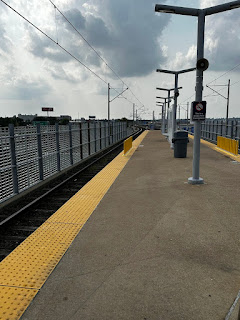Although barely visible within the dark cloud of Election Day, there were a few bright spots for people who support transit, walkable communities, and climate friendly transportation solutions. The voters in a number of cities and states approved progressive ballot measures, including measures to impose taxes on themselves to support transit systems and related improvements. Planetizen provides a great summary of these ballot measures here.
The biggest success – in my opinion – was approval by the voters in Columbus, Ohio of a ½ cent sales tax to support a major transit initiative called LinkUS. (Story here, project link here) The initiative includes funding for:
A five-leg Bus Rapid Transit (BRT) system;
A major increase in regular bus service;
Bus station improvements; and
New and improved sidewalks, bike lanes, trails and crosswalks.
This strikes me as a really good balance. The BRT projects – which are relatively far advanced – are the obvious marquee element, but all the other, lower-profile items can also have a major impact in providing sustainable mobility options.
The success of these various ballot measures around the country reinforces what we have already learned, which is that people will vote to tax themselves for transportation improvements, including transit. The most common formula is a regional ½ cent sales tax that is tied to a specific program of improvements, as in Columbus. A carefully crafted program which features high-impact, attractive projects is usually the key to success.
The approval of the Columbus measure also demonstrates that the ballot measure approach can be a successful strategy to fund transit even in a red state with a hostile legislature. Unfortunately some states prevent local tax initiatives, either by law or by their state constitution.
Good work, Columbus!













